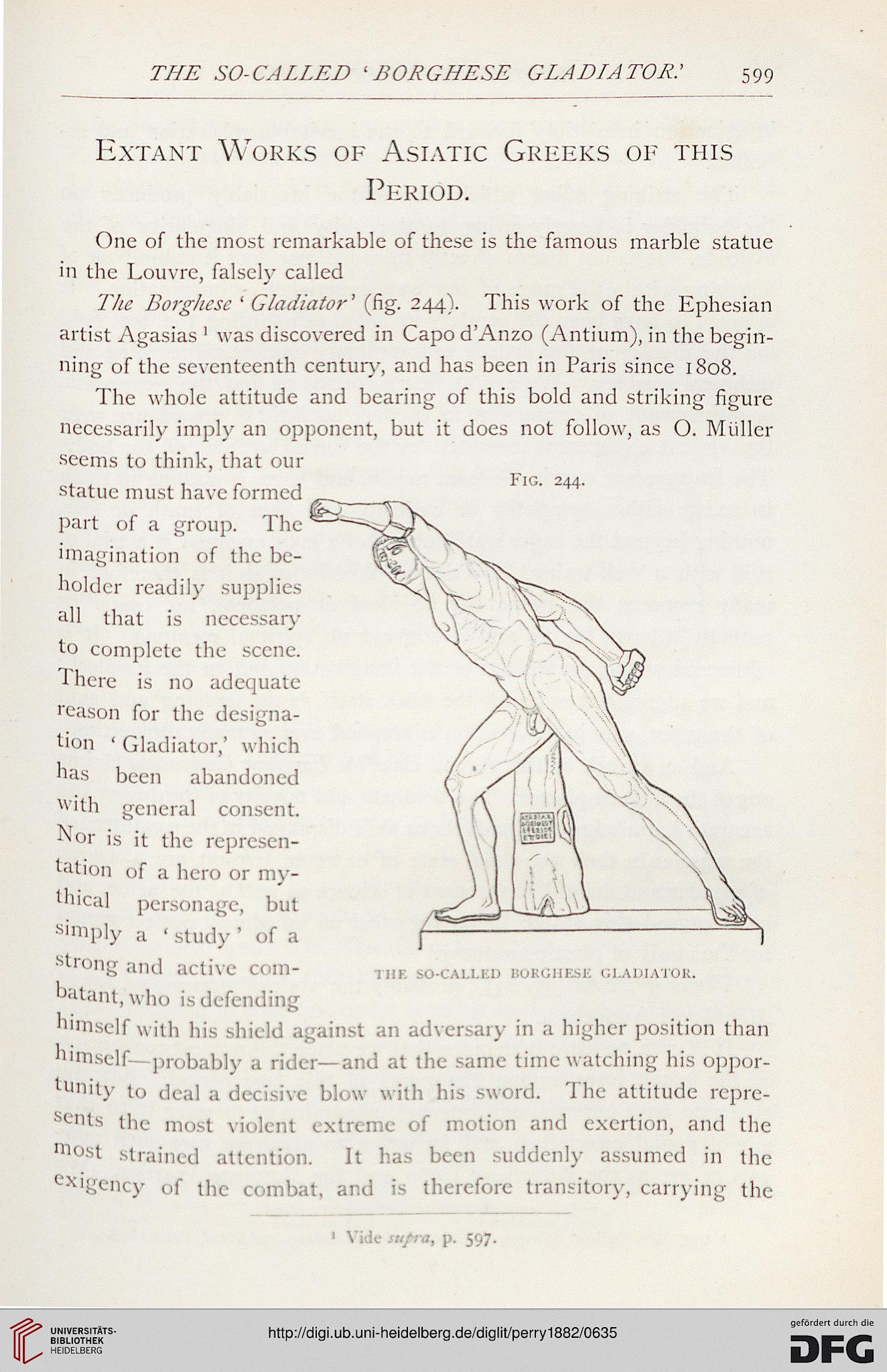THE SO-CALLED 'BORGHESE GLADIATOR: 599
Extant Works of Asiatic Greeks of this
Period.
One of the most remarkable of these is the famous marble statue
in the Louvre, falsely called
The Borghese ' Gladiator' (fig. 244). This work of the Ephesian
artist Agasias 1 was discovered in Capo d'Anzo (Antium), in the begin-
ning of the seventeenth century, and has been in Paris since 1808.
The whole attitude and bearing of this bold and striking figure
necessarily imply an opponent, but it does not follow, as O. Miiller
seems to think, that our
r Fig. 244.
statue must have formed
part of a group. The
imagination of the be-
holder readily supplies
all that is necessary
to complete the scene.
There is no adequate-
reason for the designa-
tion ' Gladiator,' which
has been abandoned
with general consent.
Nor is it the represen-
tation of a hero or my-
thical personage, but
simply a ' study ' of a
strong and active Com- YfSM so-called BOBGHESK GLADIATOR,
oatant, who is defending
himself w ith his shield against an adversary in a higher position than
himself—probably a rider—and at the same time watching his oppor-
tunity to deal a decisive blow with his sword. The attitude repre-
sents the most violent extreme of motion and exertion, and the
most strained attention. It has been suddenly assumed in the
exigency of the combat, and is therefore transitory, carrying the
Vide sup a, p. 597.
Extant Works of Asiatic Greeks of this
Period.
One of the most remarkable of these is the famous marble statue
in the Louvre, falsely called
The Borghese ' Gladiator' (fig. 244). This work of the Ephesian
artist Agasias 1 was discovered in Capo d'Anzo (Antium), in the begin-
ning of the seventeenth century, and has been in Paris since 1808.
The whole attitude and bearing of this bold and striking figure
necessarily imply an opponent, but it does not follow, as O. Miiller
seems to think, that our
r Fig. 244.
statue must have formed
part of a group. The
imagination of the be-
holder readily supplies
all that is necessary
to complete the scene.
There is no adequate-
reason for the designa-
tion ' Gladiator,' which
has been abandoned
with general consent.
Nor is it the represen-
tation of a hero or my-
thical personage, but
simply a ' study ' of a
strong and active Com- YfSM so-called BOBGHESK GLADIATOR,
oatant, who is defending
himself w ith his shield against an adversary in a higher position than
himself—probably a rider—and at the same time watching his oppor-
tunity to deal a decisive blow with his sword. The attitude repre-
sents the most violent extreme of motion and exertion, and the
most strained attention. It has been suddenly assumed in the
exigency of the combat, and is therefore transitory, carrying the
Vide sup a, p. 597.




